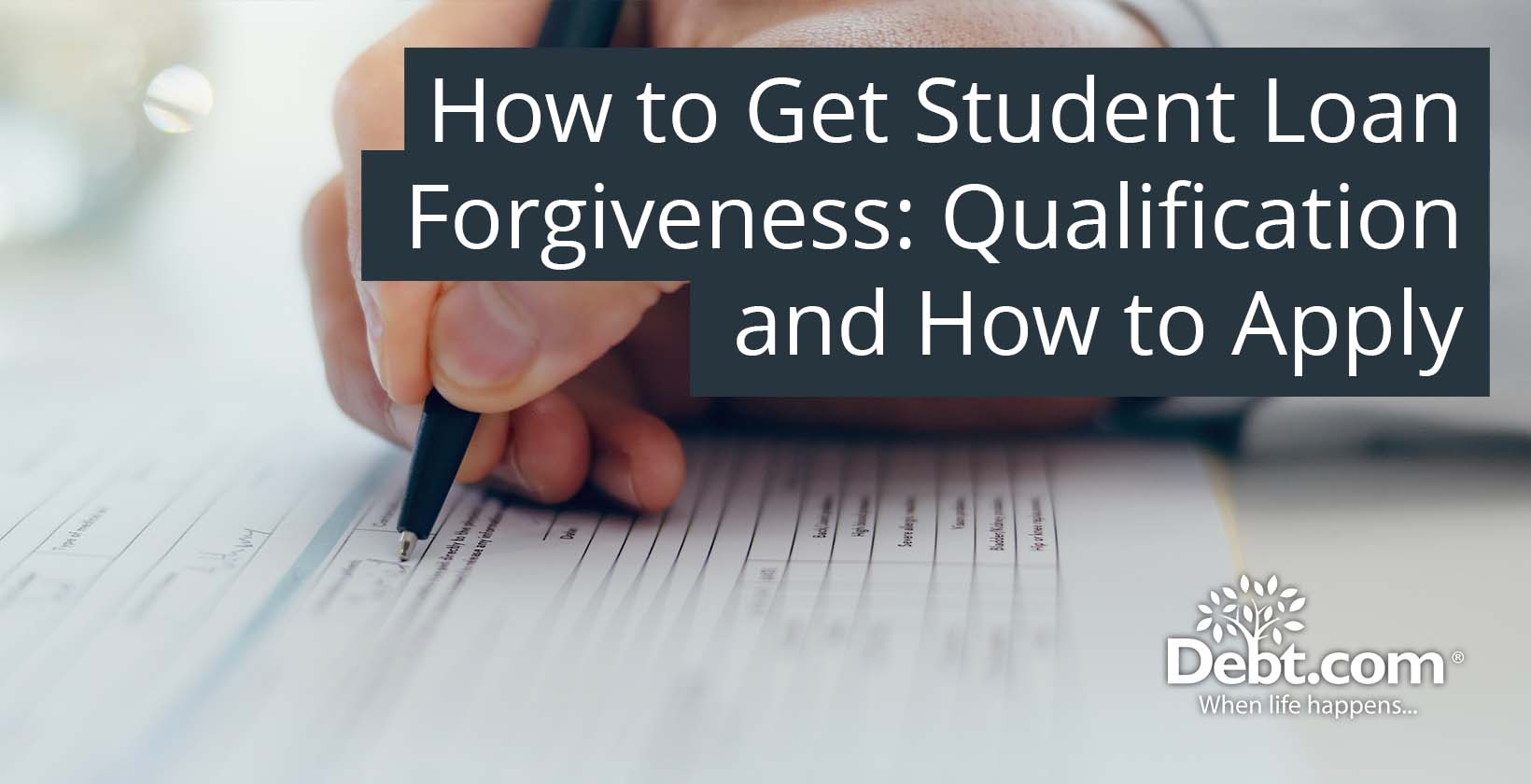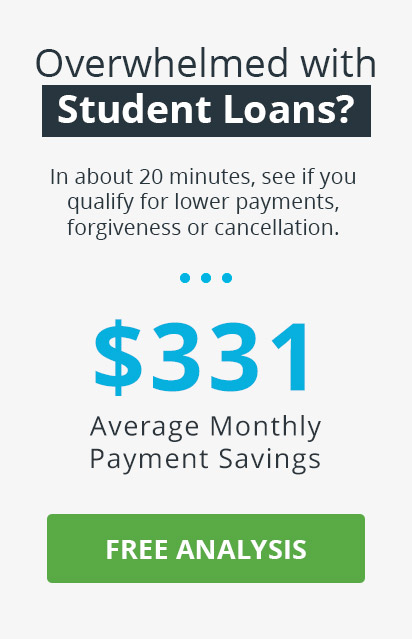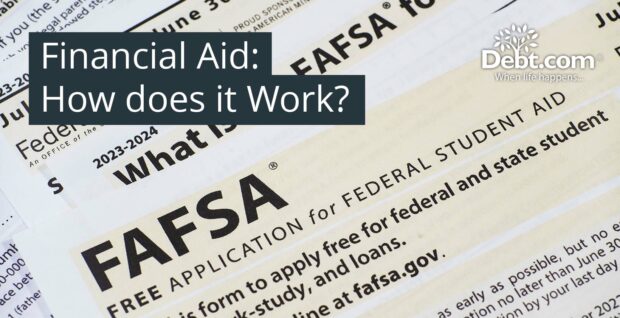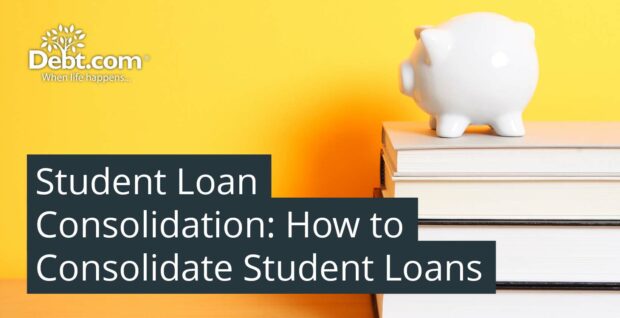
To get student loan forgiveness, there are five steps. First, determine qualification by verifying eligibility for programs like Income-Driven Repayment (IDR) Forgiveness or Public Service Loan Forgiveness (PSLF). Assess factors such as loan type, repayment plan, and employment status to avoid ineligible applications.
Second, choose a forgiveness program that fits the budget and qualifications. Options include IDR Forgiveness, Teacher Loan Forgiveness, and PSLF. Each has distinct criteria and benefits, so selecting the right one is crucial for maximizing relief.
Third, calculate the forgiveness amount based on the program’s requirements. Find out how much debt qualifies for forgiveness and estimate any remaining balance to plan financially.
Fourth, submit the required documentation to verify eligibility. Obtain the mandated documents, like Social Security numbers, financial information, and proof of employment. Accurate and complete submission prevents delays or denials.
Fifth, apply for student loan forgiveness by completing the application process for the chosen program. For example, PSLF requires submitting an Employment Certification Form, while Teacher Loan Forgiveness involves applying through the loan servicer after five years of service.
Identify the loan type and review available forgiveness programs to answer “Do I qualify for student loan forgiveness?” Check the criteria for each program and ensure to meet them before applying. The steps for “How to apply for student loan forgiveness?” include filling out the right forms and submitting the necessary documentation. Follow the specific application procedures for the program and stay informed about deadlines to apply for student loan forgiveness. The response to “How to get your student loans forgiven?” depends on meeting program requirements and maintaining accurate records.
Table of Contents
1. Determine Qualification for Student Loan Forgiveness
Determining qualification for student loan forgiveness involves verifying eligibility for programs like Income-Driven Repayment (IDR) Forgiveness or Public Service Loan Forgiveness (PSLF). The process includes assessing loan type, repayment plan, employment status, and payment history. For example, PSLF requires employment with a qualifying nonprofit or public service organization and 120 qualifying payments, while IDR Forgiveness necessitates 20 or 25 years of payments under a qualifying repayment plan with federal Direct Loans.
The goal of determining eligibility is to establish a solid foundation for the application process. Accurate assessment prevents wasted time on ineligible applications and helps borrowers avoid unnecessary financial stress. Essential documentation, such as pay stubs and job certificates, is crucial once eligibility is confirmed.
2. Choose a Student Loan Forgiveness Program
Choosing a student loan forgiveness program involves selecting the forgiveness plan that best fits the borrower’s financial situation and eligibility. Choosing a program impacts reducing or eliminating student loan debt through various federal programs. Options include Income-Driven Repayment (IDR) Forgiveness, Teacher Loan Forgiveness, and Public Service Loan Forgiveness (PSLF). Choosing the right program is essential because each has eligibility criteria and benefits.
The importance of choosing a Student Loan Forgiveness Program lies in its effect on a person’s financial future. Choosing the right program based on employment type, service duration, and income leads to substantial savings or even full loan discharge. Following the process and meeting requirements avoid delays or denials, which extend debt repayment and increase financial stress.
For example, Public Service Loan Forgiveness (PSLF) forgives the remaining balance of Direct Loans after 120 qualifying payments for borrowers in eligible government or nonprofit jobs. Teacher Loan Forgiveness offers up to $17,500 to teachers working full-time in low-income schools for five consecutive years. Income-Driven Repayment (IDR) Forgiveness provides loan forgiveness after 20 to 25 years of payments based on income and family size. Total and Permanent Disability Discharge offers full discharge of federal student loans for borrowers with a total and permanent disability.
3. Calculate the Amount that can be Forgiven
Calculating the amount that can be forgiven involves determining how much student loan debt is eligible to be eliminated under forgiveness programs like Teacher Loan Forgiveness (TLF) and Public Service Loan Forgiveness (PSLF). The process includes counting the qualifying payments made and evaluating program requirements. Knowing the amount of forgiveness available helps borrowers estimate their remaining debt and plan financially.
Calculating the amount is crucial for financial planning, as it reveals the potential relief a borrower is entitled to receive, which impacts their budget and tax obligations. It allows borrowers to project future expenses and prepare for any tax consequences of debt forgiveness, which vary by program.
For example, PSLF allows borrowers who work for a government agency or nonprofit to have their remaining loan balance forgiven if they make 120 qualifying payments. The remaining $40,000 is forgiven after ten years if a $60,000 loan has been repaid with $20,000 over the life of the loan. The TLF program provides up to $17,500 in forgiveness for teachers who serve five years in a low-income school. Teachers with remaining debts of $20,000 owe $2,500 after forgiveness.
Calculating the forgiven amount helps borrowers maximize the benefits of these programs and make informed repayment decisions.
4. Submit Documentations Required
Submitting Documentation Required is essential to verify eligibility for forgiveness plans, such as the Income-Driven Repayment (IDR) plan. Key documents include Social Security numbers, personal financial details, and, if relevant, information about a spouse’s income. All documents must be prepared in advance and submitted in one session via the official student aid portal to complete the IDR application.
Submitting the required paperwork is vital for accurately determining a borrower’s eligibility for forgiveness programs. Proper documentation reduces the risk of delays or denials caused by incomplete or incorrect information. It increases the likelihood of approval and maintains an organized record for future reference and compliance with programs like Public Service Loan Forgiveness (PSLF).
Documentation requirements vary by forgiveness program. Commonly required documents include a valid Federal Student Aid (FSA) ID, financial information such as Adjusted Gross Income (AGI), and personal identification details. Borrowers need to provide their spouse’s income information for specific IDR plans. Up-to-date tax information and pay stubs are required if alternative documents are used to verify income during the application process.
5. Apply for the Student Loan Forgiveness
Applying for Student Loan Forgiveness is the official procedure for requesting the cancellation of all or part of student loan debt. It involves filling out an application, supplying required paperwork, and demonstrating eligibility per the program’s requirements. For example, the Public Service Loan Forgiveness (PSLF) program necessitates at least ten years of eligible work and consistent loan payments.
The importance of applying for Student Loan Forgiveness lies in its potential for significant financial relief. Successfully applying lowers total debt, improves credit ratings, and enhances financial flexibility. Accurate submission is crucial, as errors or misunderstandings about eligibility lead to missed opportunities for relief. Many have been rejected due to administrative mistakes.
For example, the PSLF program requires borrowers to submit an Employment Certification Form annually to verify employment with a qualifying public service organization. PSLF applications are submitted to the Department of Education once all requirements are met. The Teacher Loan Forgiveness program allows educators to apply for forgiveness by submitting a specific application to their loan servicer after five years of full-time service at a low-income school. Properly completing these forms significantly reduces the financial burden of student loans.
What is Student Loan Forgiveness?
Student Loan Forgiveness is a set of programs to cancel some or all of a borrower’s federal student loan debt. Forgiveness programs target individuals who meet specific criteria, such as working in certain professions or following designated repayment plans. The aim is to reduce the financial burden of education and promote service in high-need areas, benefiting borrowers in public service or facing economic hardship.
Student Loan Forgiveness works by releasing borrowers from the obligation to repay a portion or all of their federal student loan debt, provided they meet specific eligibility requirements. For example, borrowers qualify by working in public service roles or using income-driven repayment plans, which require making payments for a set period before forgiveness is granted. The forgiveness of student loans is mostly available to federal direct loans.
For example, the Public Service Loan Forgiveness (PSLF) program requires borrowers to make 120 qualifying payments while employed in a qualifying position with a government or non-profit organization. The application process involves consolidating existing loans into a direct consolidation loan and submitting the necessary forms to the loan servicer.
Why should you Get Student Loan Forgiveness?
The reasons why you should get student loan forgiveness are listed below.
- Financial Relief: Student loan forgiveness substantially reduces debt burdens, increases disposable income, and saves on interest payments, allowing borrowers to allocate funds for investments, homes, or other critical expenses.
- Better Financial Health: Forgiveness improves credit ratings by lowering past delinquencies, enhancing the debt-to-income ratio, and boosting overall credit scores.
- Improved Economic Mobility: Reduced debt enables borrowers to invest in their children’s education, start new ventures, or buy homes, enhancing personal financial security and contributing to economic growth through higher consumer spending.
- Social Benefits: Alleviating student debt reduces stress and anxiety, leading to better mental health and overall well-being in communities with high debt levels.
- Economic Growth Prospects: Canceling student loans boost GDP by approximately $109 billion over six years, create 1.5 million new jobs, and help millions escape poverty, increasing consumer spending and strengthening the economy.
When are the Best Times to Get Student Loan Forgiveness?
The best times to get student loan forgiveness are listed below.
- After 20-25 Years of Payments Made Under an IDR Plan: Forgiveness occurs after 20–25 years of qualifying payments for programs like Income-Based Repayment (IBR), Pay As You Earn (PAYE), and Revised Pay As You Earn (REPAYE). It is best for borrowers who struggle to afford the standard 10-year plan, as payments are based on discretionary income.
- After 120 Qualifying Payments Under PSLF: The Public Service Loan Forgiveness (PSLF) program forgives remaining federal direct loan amounts after 120 qualifying payments. Pursue PSLF early in a public service career, as it takes ten or more years to meet the payment requirement.
- After 5 Years of Teaching at a Low-Income School Under TLF: Teachers who work full-time for 5 consecutive years at a low-income school are eligible for up to $17,500 in Teacher Loan Forgiveness (TLF). Opt for TLF early in teaching to meet the 5-year service requirement.
- During a National Emergency or Disaster: Future national emergencies lead to temporary relief measures, such as paused payments and interest accrual. It is an ideal time to seek forgiveness or deferment.
How to Know if you’re Qualified for Student Loan Forgiveness?
To know if you’re qualified for student loan forgiveness, there are six steps to follow. First, identify the loan type by logging into StudentAid.gov and reviewing the “Loan Breakdown” section. Determine the eligibility for Direct Loans, Federal Family Education Loans (FFELs), or Perkins Loans.
Second, understand the forgiveness programs available. Income-Driven Repayment (IDR) Forgiveness applies to Direct Loans after 20 or 25 years of qualifying payments. Public Service Loan Forgiveness (PSLF) is for borrowers working full-time for a qualifying government or nonprofit organization with 120 qualifying payments on a Direct Loan. Teacher Loan Forgiveness offers up to $17,500 for teaching full-time for five consecutive years in a low-income school. Total and Permanent Disability (TPD) Discharge is for borrowers with a severe disability preventing work. Borrower Defense to Repayment and Closed School Discharge apply if the school was closed during enrollment or there was deception. Determine which program best suits the circumstances to learn who qualifies for student loan forgiveness.
Third, check eligibility requirements for each program. Verify the eligibility, such as the type of job for PSLF or the duration of service for Teacher Loan Forgiveness, and confirm the completion of qualifying payments.
Fourth, apply for the forgiveness program by submitting the necessary forms. Submit the PSLF form annually, and when changing employers, recertify the income and family size annually for IDR Forgiveness. Apply for teacher loan forgiveness after five years of teaching. Provide supporting documentation from the doctor or relevant agency for TPD Discharge.
Fifth, stay informed of deadlines and updates. Check for important dates and changes, such as consolidation deadlines, and regularly review updates from StudentAid.gov and the U.S. Department of Education.
Lastly, confirm the qualification by communicating with the loan servicer to verify qualifying payments and ensure all requirements are met. Track the progress by checking payment counts and employment certifications.
Can Parents Get Student Loan Forgiveness for Loans they Took Out for their Children?
Yes, parents can get student loan forgiveness for loans they took out for their children, but the conditions are restricted and specific.
Parents qualify for forgiveness if they have taken out loans through the Parent PLUS Loan program. One option is Public Service Loan Forgiveness (PSLF), available to parents who work in qualifying public service jobs and make 120 qualifying monthly payments.
Another option is Income-Driven Repayment (IDR) Plans. Parents are allowed to enroll in an IDR plan if the loans are consolidated into a Direct Consolidation Loan. Any remaining balance is forgiven after 20 or 25 years of payments, depending on the plan.
Eligibility for forgiveness of Parent Loans for Students depends on meeting specific criteria, such as qualifying employment or consistent payments, and is limited to these programs.
What Types of Student Loan Forgiveness Programs can you Get?
The types of student loan forgiveness programs you can get are listed below.
- Public Service Loan Forgiveness (PSLF): PSLF forgives the remaining balance on federal Direct Loans after 120 qualifying monthly payments. Eligibility requires full-time employment with a qualifying government or nonprofit organization, holding federal Direct Loans, and making payments under an eligible repayment plan starting after October 1, 2007.
- Teacher Loan Forgiveness Program (TLFP): TLFP offers up to $17,500 in loan forgiveness for teachers who complete five consecutive years of full-time teaching at a low-income school. Eligibility includes employment at an eligible low-income school, being classified as “highly qualified” by the U.S. Department of Education, and holding federal student loans.
- Income-Driven Repayment (IDR) Forgiveness: IDR Forgiveness provides loan forgiveness after 20 to 25 years of qualifying payments under an income-driven repayment plan. Eligibility requires enrollment in a qualifying IDR plan and making income-based payments over the designated period.
- Military Student Loan Forgiveness Program: The program, among the Types of Student Loan Forgiveness Programs, helps active-duty military personnel repay loans through initiatives like the College Loan Repayment Program (CLRP). Eligibility includes at least three years of active duty service and meeting additional requirements the military branch sets.
Is there a Deadline for Applying for Student Loan Forgiveness?
No, there is no specific deadline for applying for student loan forgiveness programs, including Public Service Loan Forgiveness (PSLF), Income-Driven Repayment (IDR) Forgiveness, Teacher Loan Forgiveness, Total and Permanent Disability (TPD) Discharge, Borrower Defense to Repayment, or Closed School Discharge.
The PSLF program does not have a fixed application deadline. Borrowers must regularly submit the Employment Certification Form to ensure they are on track and to stay updated on any special adjustments or waivers. There is no defined deadline for IDR forgiveness, but borrowers must recertify their income and family size each year and make qualifying payments over a 20 to 25-year period.
Teachers must apply for the Teacher Loan Forgiveness program after completing five years of qualifying service. There is no strict deadline for applying, but it is advisable to apply promptly once the service requirement has been met.
Applications for Borrower Defense to Repayment and TPD Discharge must be submitted as soon as the borrower meets the eligibility criteria. Closed school discharge applications must be submitted immediately following the school’s closing.
Temporary Payment Count Adjustment has a deadline. Borrowers must consolidate their loans by June 30, 2024, to benefit from the adjustment and to have periods counted toward PSLF.
How to Manage Student Loans while Seeking Forgiveness?
To manage student loans while seeking forgiveness, follow the 10 steps listed below.
- Choose the right repayment plan. Enroll in an Income-Driven Repayment (IDR) Plan like Income-Based Repayment (IBR), Income-Contingent Repayment (ICR), Pay As You Earn (PAYE), or Revised Pay As You Earn (REPAYE). These plans cap monthly payments based on discretionary income, ensuring affordability and eligibility for forgiveness.
- Certify the employment annually. Submit the Employment Certification Form (ECF) annually and whenever changing employers to ensure accurate tracking of employment and payments for Public Service Loan Forgiveness (PSLF).
- Recertify the income and family size annually. Recertify income and family size for IDR plans to maintain eligibility and correct payment amounts. Failure to recertify leads to higher payments under a standard repayment plan.
- Keep detailed records. Maintain thorough records of loan payments, communication with the loan servicer, employment certifications, and repayment plan changes to handle potential disputes or issues.
- Stay informed about program changes. Regularly check StudentAid.gov and other official resources for updates on forgiveness programs and policy changes, including deadlines for payment count adjustments, such as June 30, 2024.
- Consider loan consolidation carefully. Evaluate the impact of consolidating loans into a Direct Consolidation Loan, especially if holding FFEL or Perkins Loans. Consolidation resets the count of qualifying payments for forgiveness programs.
- Plan for tax implications. Understand that forgiveness under IDR plans is taxable income. Consult a tax advisor and set aside funds for potential tax liabilities.
- Consult financial advisors or loan experts. Seek advice from financial advisors or student loan experts to navigate loan forgiveness programs and make informed financial decisions.
- Maintain regular communication with the loan servicer. Contact the loan servicer regularly to ensure accurate payment recording, up-to-date repayment plans, and prompt resolution of any concerns.
- Utilize available resources and tools. Use loan simulators and calculators on StudentAid.gov to understand how different repayment plans and forgiveness options affect the loan balance and repayment timeline.
Is Student Loan Forgiveness only Applicable to Federal Student Loans?
No, Student Loan Forgiveness is not only applicable to Federal Student Loans. Forgiveness plans are primarily intended for Federal Student Loans, including PLUS, Direct Unsubsidized, and Direct Subsidized Loans. Programs like Public Service Loan Forgiveness (PSLF) and Teacher Loan Forgiveness offer significant relief for these loans if specific requirements are met. Forgiveness options for private student loans issued by private lenders are limited. Borrowers with private loans find relief through options such as refinancing or negotiating reduced payments. Federal Student Loans benefit from extensive forgiveness programs, whereas private loans have fewer forgiveness opportunities and more restricted relief options.
Can Getting Student Loan Forgiveness Impact your Credit Score?
Yes, getting student loan forgiveness can impact your credit score. Student loans are forgiven when the debt is eliminated, which improves the credit score. It is due to a decrease in the credit utilization ratio, signaling to creditors that borrowers have less outstanding debt.
Student loan forgiveness enhances payment history. The positive history remains if regular payments were made before forgiveness, contributing to a higher credit score. A lower total debt balance combined with a continuous record of on-time payments results in an improved credit score. The Credit Score Impact of Student Loan Forgiveness varies based on individual credit profiles and other factors. Forgiveness improves credit scores, but the results vary from person to person.









